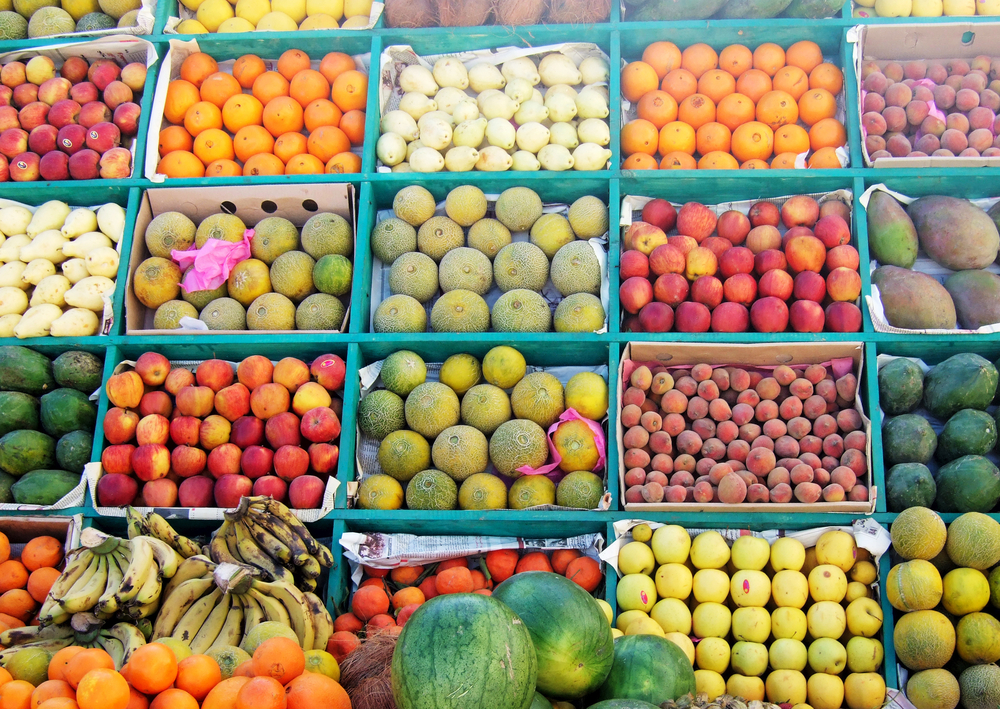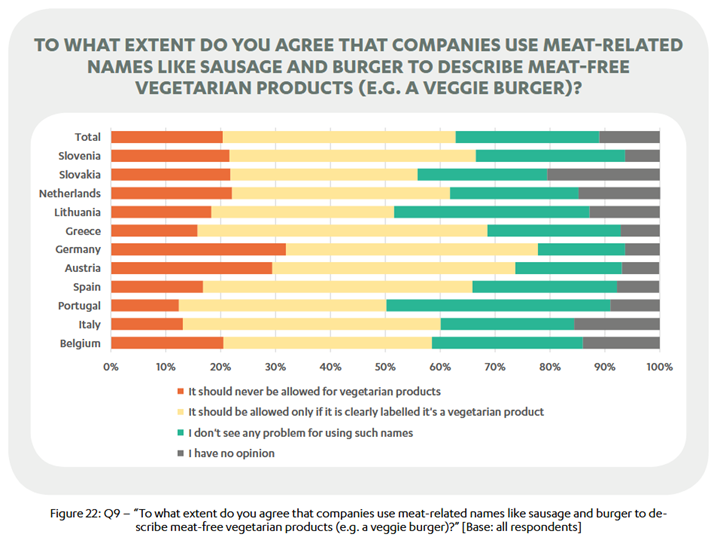Veggie burger and sausages, vegan tuna, all these names of plant-based alternatives to animal source foods have been a topic of debate at EU and national level in recent years. It has recently found its way back into discussions in the Council of the EU, the European Parliament and in the European Commission. Policymakers voiced concerns about consumers being confused over these terms. Is that really the case? Our data says no.
Shifting diets
Diets across the EU are significantly misaligned with healthy eating guidelines: 80% of Europeans are not eating enough wholegrains, legumes, fruits and vegetables. This under-consumption is a key driver of cardiovascular diseases, cancer, diabetes and kidney disease. Shifting to healthier and more plant-based diets – rich in vegetables, fruits, legumes, nuts and wholegrains – can have a positive impact on human health, on the planet and on animals. “Veggie burgers” and similar products are increasingly popular with consumers trying to diversify their diets and with those who want to try new products next to more traditional sources of plant protein such as lentils and chickpeas. The appeal of these alternatives depends on them being easily identifiable by consumers, affordable, available and advertised. However, food environments – i.e. all factors that influence our food choices, consciously or unconsciously – steer our choices towards less health and sustainable food.

What should these plant-based alternatives be called?
Evidence from consumer organisations confirms that the majority of consumers are not confused about these terms. A 2020 BEUC survey found that most consumers (about 70%) are not concerned about the naming of veggie ‘burgers’ or ‘sausages’, as long as the products are clearly identifiable as vegetarian/vegan. Most respondents (42%) said these names should be permitted provided that the products are clearly labelled as vegetarian/vegan, and 1 in 4 (26.2%) do not see any problem at all with using such names. Another 11% have no opinion.
As an umbrella group for consumer organisations, we have always stated that the denomination of plant-based alternatives should neither mislead consumers nor discourage them from buying these products. For instance, the use of culinary ‘meaty’ names on plant-based foods (such as ‘steak’, ‘sausage’, ‘burger’) makes it easier for consumers to know how to integrate these products within a meal, especially for those who want to include more plant-based foods into their diets.
Déjà-vu?
In 2020, the European Parliament voted down a proposal to restrict the use of meat denominations for plant-based products. Four years later, the EU Court of Justice (ECJ) ruled that Member States cannot ban plant-based products from using meat denominations unless they have adopted legal names defining, for instance, what a ‘sausage’ or a ‘burger’. Setting EU definitions would bring little consumer benefit, risks creating unnecessary barriers in the Single Market, contradicts the EU simplification agenda by introducing additional rules while companies are calling for lighter regulation. The same ECJ ruling also acknowledged that current legislation is sufficient to protect and inform consumers. Interestingly, even though policymakers often hold this debate in the name of consumer protection, they have, for the large part, not consulted consumer organisations in the process.
No food packaging should mislead consumers
With the consumption of plant-based alternatives for meat and seafood products growing five-fold since 2011, it is clear that consumers are consciously choosing to include them in their diets.
To truly ensure that consumers can make better informed choices, clear food information and trustworthy labels on the packaging must inform them about what it contains as well as the sustainability and nutritional value of food. No food packaging should mislead consumers, be it through illustrations, package design, or text, including health and nutritional claims, regardless of the product type.
Our data speaks for itself, the debate lies in labelling products clearly and equipping consumers with the tools they need to make better informed choices. This is where consumer organisations can provide insights and guidance on what consumers expect.


